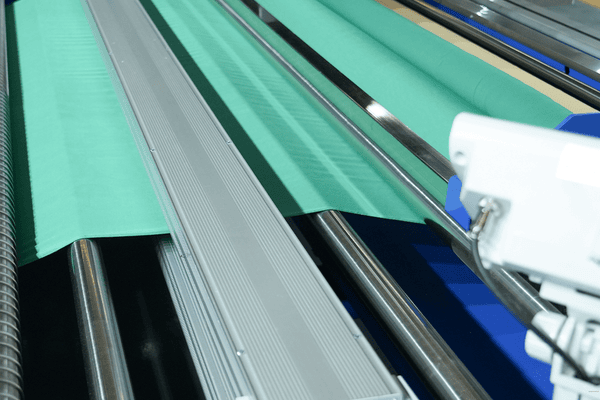I Events
Why Do High-Elastic Fabrics Need a Fabric Relaxing Machine?
High-elastic fabrics (such as spandex, lycra, stretch cotton, four-way stretch, etc.) are widely used in sportswear, yoga wear, swimwear, underwear, and other fields due to their excellent elasticity, softness, and comfort. However, during the production and processing process, high-elastic fabrics often shrink, deform, or become dimensionally unstable due to tension accumulation, affecting the quality of the final product. Therefore, before entering the subsequent processing links (such as cutting, sewing, printing, and dyeing), the fabric tension must be released through a fabric relaxing machine to ensure its dimensional stability and consistency of feel.
How Does a Fabric Relaxing Machine Help High-Elastic Fabrics Stabilize Their Size?
The core function of a fabric relaxing machine is to release the stress and tension inside the fabric so that the fabric remains stable after processing and avoids shrinkage, curling, or uneven size due to tension not being eliminated. For highly elastic fabrics, an ideal relaxer usually has the following features:
-Multiple relaxation processes (such as airflow relaxation, vibration relaxation, swing relaxation, etc.)
-Controllable conveying system to prevent fabric stretching or deformation.
-The adjustable tension function is suitable for fabrics with different weights and elasticities.

What Factors Should be Considered When Choosing a Fabric Relaxing Machine?
(1) Relaxation Effect
Different fabric relaxing machines use different relaxation methods. For high-elastic fabrics, it is recommended to choose equipment with multi-level relaxation processes, such as:- Airflow relaxation: Use hot air and airflow to allow the fabric to naturally restore its original size without tension.
- Mechanical swing relaxation: Through slow swinging and slight vibration, the fabric releases tension in the dynamic process.
- Multi-layer relaxation: Some equipment provides a multi-level conveyor belt structure to ensure that the fabric has undergone multiple relaxation treatments and the effect is more stable.
(2) Adaptability
Different fabrics have different elasticity, gram weight, and composition, so the fabric relaxing machine should have:- An adjustable tension system to adapt to light and heavy fabrics.
- Controllable conveying speed to prevent the fabric from stretching and deforming during the conveying process.
- Different control modes to ensure that the elasticity of the fabric is not affected by uneven force.
(3) Energy Efficiency and Cost Control
Modern fabric relaxing machines usually use energy-saving heating technology, intelligent control systems, and circulating air design to effectively reduce energy consumption and improve production efficiency. When selecting equipment, attention should be paid to:- Whether energy consumption is optimized (such as low-energy heating, intelligent temperature control system).
- The degree of automation (such as intelligent monitoring of fabric status, automatic adjustment of conveying speed, etc.).
- Maintenance cost (whether it is easy to clean and maintain).
Fabric Relaxing Machine Recommendation:
Currently on the market, some high-end fabric relaxing machines provide precise relaxation + intelligent control solutions for high-elastic fabrics, such as:
SUNTECH fabric relaxing machine: It adopts a triple relaxation process, has an efficient tension release function, and supports wide fabric processing, which is suitable for high-elastic fabrics.
Conclusion
For textile enterprises, choosing a suitable fabric relaxing machine needs to be combined with their fabric type, production needs, and cost budget. If the main processing is high-elastic fabrics, it is recommended to give priority to a multi-stage relaxation system, controllable tension conveying, prevention of secondary deformation, high energy efficiency design, and reduced operating costs.
By rationally selecting fabric relaxing machines, textile enterprises can not only improve product quality but also optimize production efficiency, reduce scrap rate, and occupy a more advantageous position in the fiercely competitive market!




